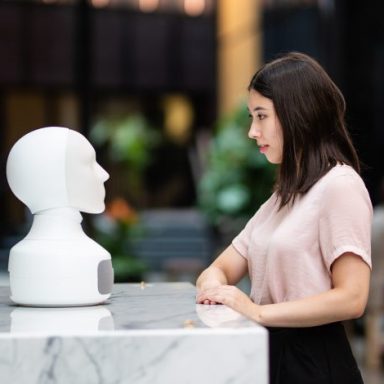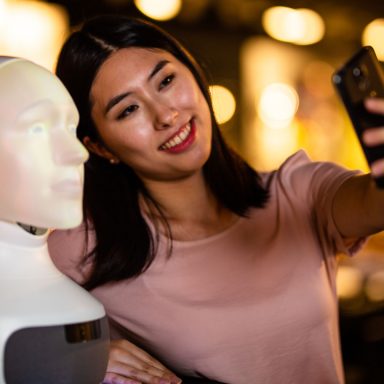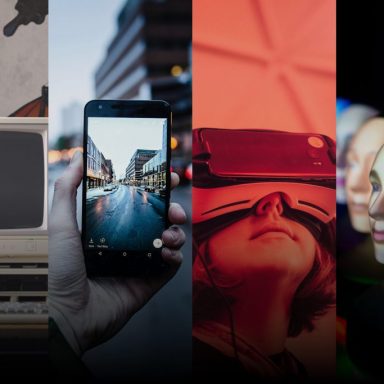Due to the pandemic, there is an estimated 850 million - 1.1 billion losses of international tourist arrivals.
Being curious about the topic, not only from a social robotics perspective, but also as an international group with a love of travelling, the team here at Furhat Robotics started to think about how social robots could alleviate the travel situation. Through our partnership with Deutsche Bahn, we are already exploring how social robots can guide travellers at international transportation hubs in various languages and in an efficient, yet friendly way. Although it was not designed with COVID-19 restrictions in mind, unexpected benefits are the no-touch solution as well as reducing the otherwise significant exposure to new people for a human worker. Below, you can see an inspirational concept of the Furhat robot being used in this setting.
Social robots can, by their very nature, provide many of the key aspects that are needed in the tourism sector going forward (as noted in this report from McKinsey):
- They provide a no-touch and no-human solution, allowing for physical safety for both travelers and tourism employees
- They can provide data to better understand tourists’ needs, common questions and opinions, which will be valuable to better predict future travel patterns
- The robots are easy to scale up and down depending on fluctuations in demand
- Services are provided in all major languages, assisting tourists traveling globally
- An inclusive and accessible service is provided around the clock
But the value of social robots – a physical robot that connects with you in a human-like, emotional way – is in our view so much bigger than only being a corona-safe, no-touch interface.
So, let’s explore some of the ways social robots can be used within the travel & tourism industry:
1. Immersive characters
Social robots, and the Furhat robot in particular, can be
customized to portray various personas with ease. Aside from wigs and miscellaneous items of clothing, Furhat is back-projected, meaning the projector that sits inside of the robot can change the digital image at the click of a button. The physical magnetic mask can also be swapped out to allow for greater levels of customization to suit a particular persona. These character customizations make the robot ideal to be placed in museums, theme parks or tourist information centers, just as a few examples.
A creative use of this feature can be seen from our partnership with Bandai Namco, where we designed a physical embodiment of their famous Manga character, Mirai Komachi. The intention is to deploy the robot in gaming halls and amusement parks, entertaining fans of all ages.
2. Language and culture learning
Another application of how social robots can be used is to teach local history, traditions & basic words of the local language in a fun and interactive manner. Expanding awareness of cultural traditions (e.g. what certain expressions/gestures mean and what items of clothing are appropriate to wear) is something that social robots can educate visitors about. This can naturally be achieved through immersive characters.
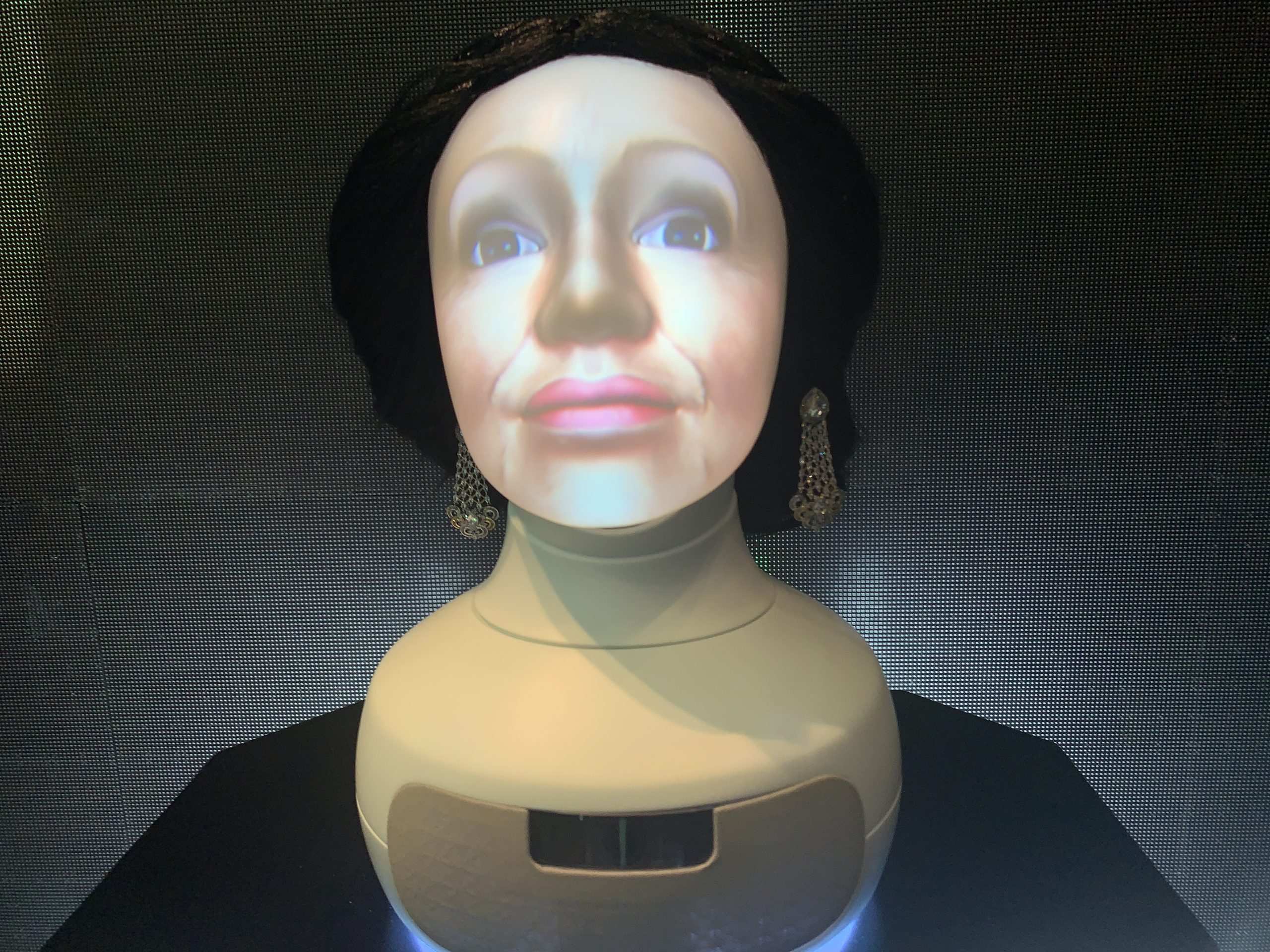 Furhat robot as the famous Egyptian singer, songwriter & actress, Umm Kulthum, telling stories and singing to passers-by
Furhat robot as the famous Egyptian singer, songwriter & actress, Umm Kulthum, telling stories and singing to passers-by
A research paper titled ‘Teaching the meaning of culture-related gestures with social robots’ explores how the technology can be used in this setting, as they are capable of explaining about the meaning and the context in which particular gestures should be used.
3. Storytelling
Storytelling is an age-old tradition, each culture having its own story or narrative that is shared to educate, entertain or preserve cultural values. When it comes to engaging children, telling stories as a means to share information & educate is one of the best methods. A Furhat robot could be placed in a location and teach the history of a particular monument or building for example, made especially unique and attention-grabbing through its ability to change characters during the story, through the animated face and digital voice. This may also be a particularly useful application in queues, airports, or locations where children easily become bored or agitated.
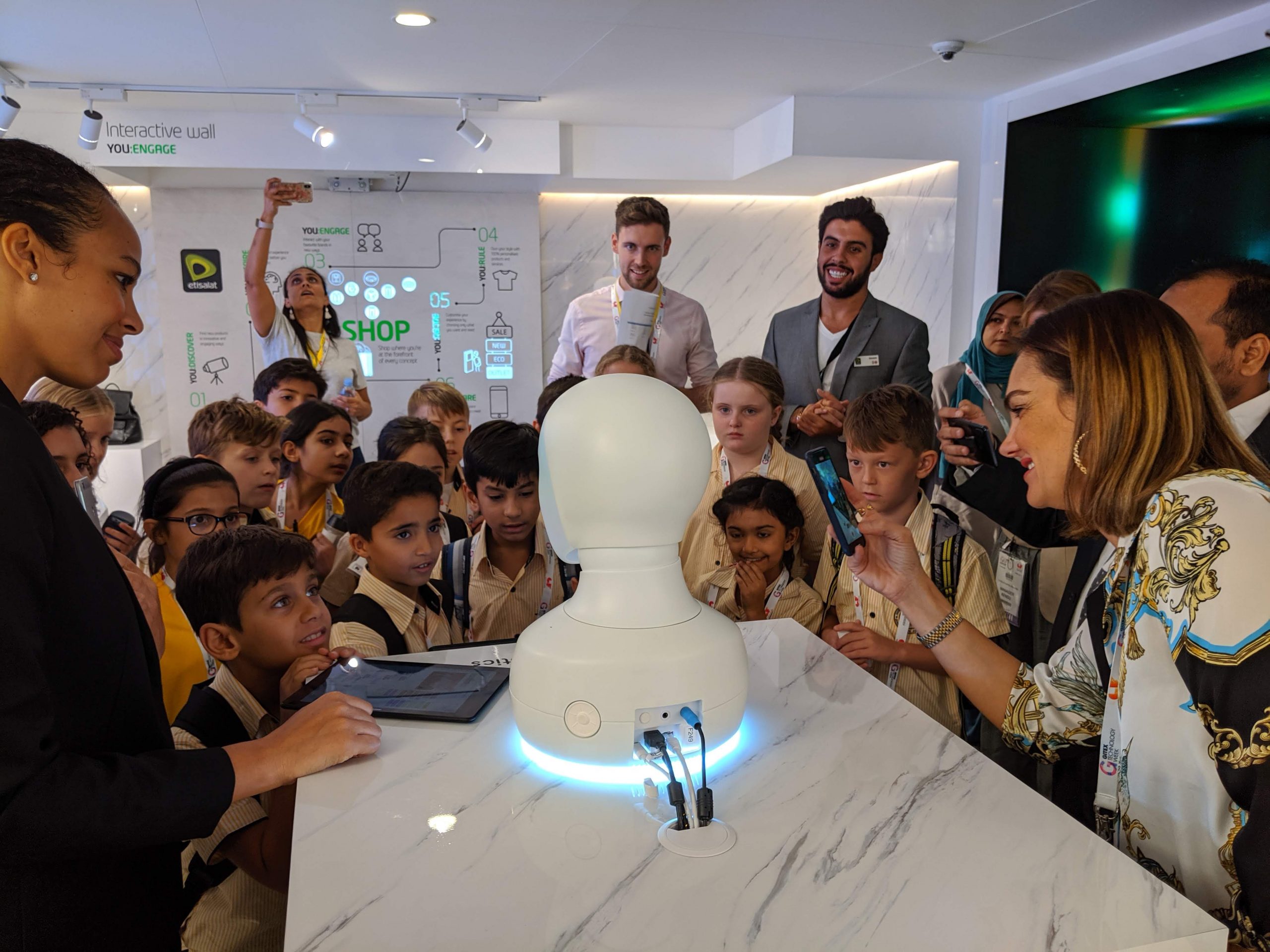
4. Customer service & FAQ
Social robots are perfectly positioned to handle customer service queries and questions from travelers. In replacing unintuitive screens or signs, people can simply ask a question to the robot in the same way they would to a human customer service agent. The robot can access backend systems to extract data, such as flight information or customer records, in order to provide personalized services. This is made all the more useful, as the robot is highly likely to speak the native language of the user. One of the main benefits of this is the positive and social experience travelers receive, something which other forms of technology simply cannot offer.
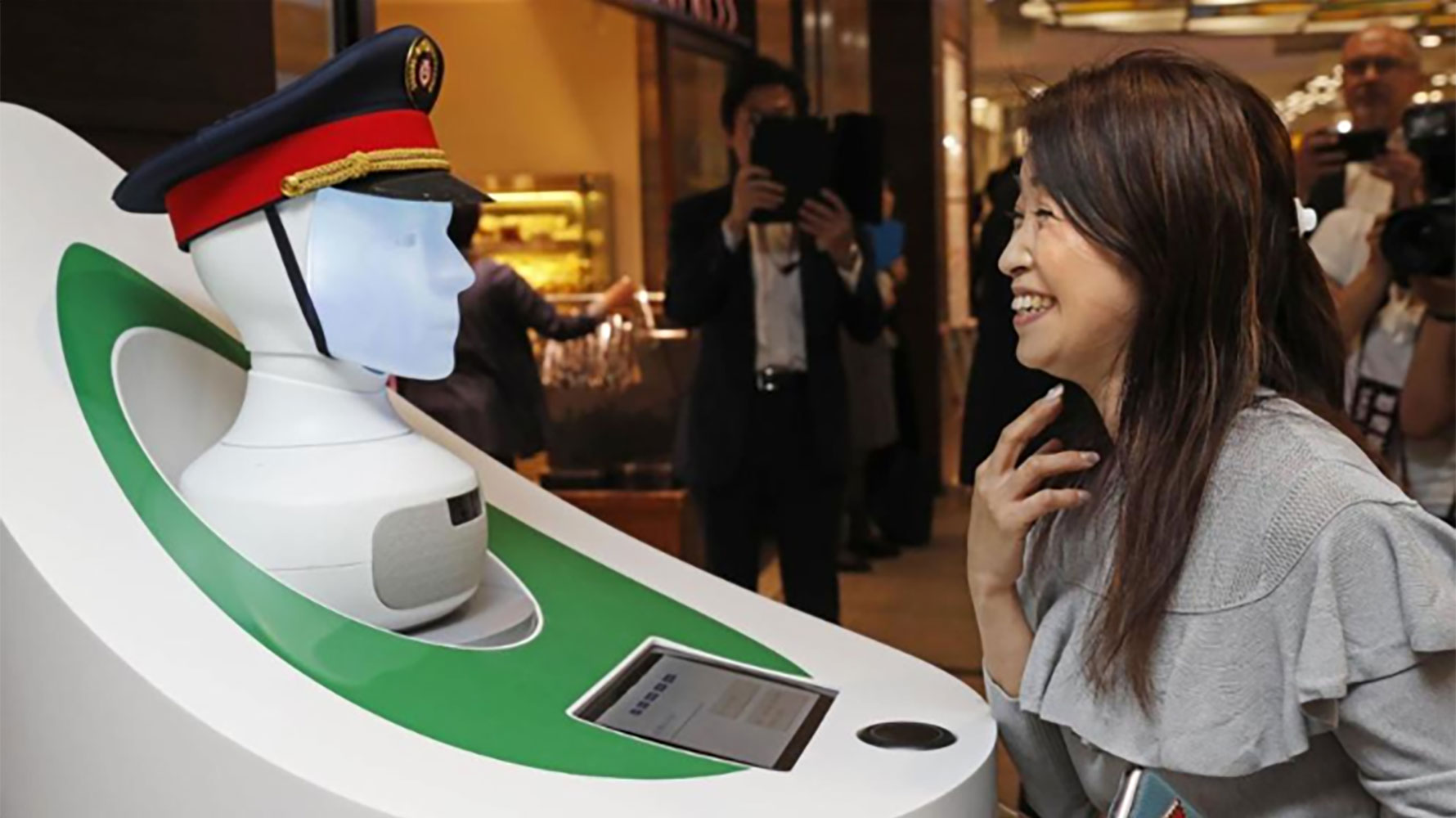
5. Interactively guide visitors to hidden gems & local businesses
A report by McKinsey shows that workers in the accommodation & food service industries are at the highest risk of unemployment due to the pandemic, which is particularly detrimental given that these jobs can be the lowest earners in developed countries. To help bring customers back to these hardest-hit businesses, it’s possible to program robots with knowledge of the nearby area and smaller businesses that are struggling. By referring visitors to these places, it is a method of helping to boost the local economy.
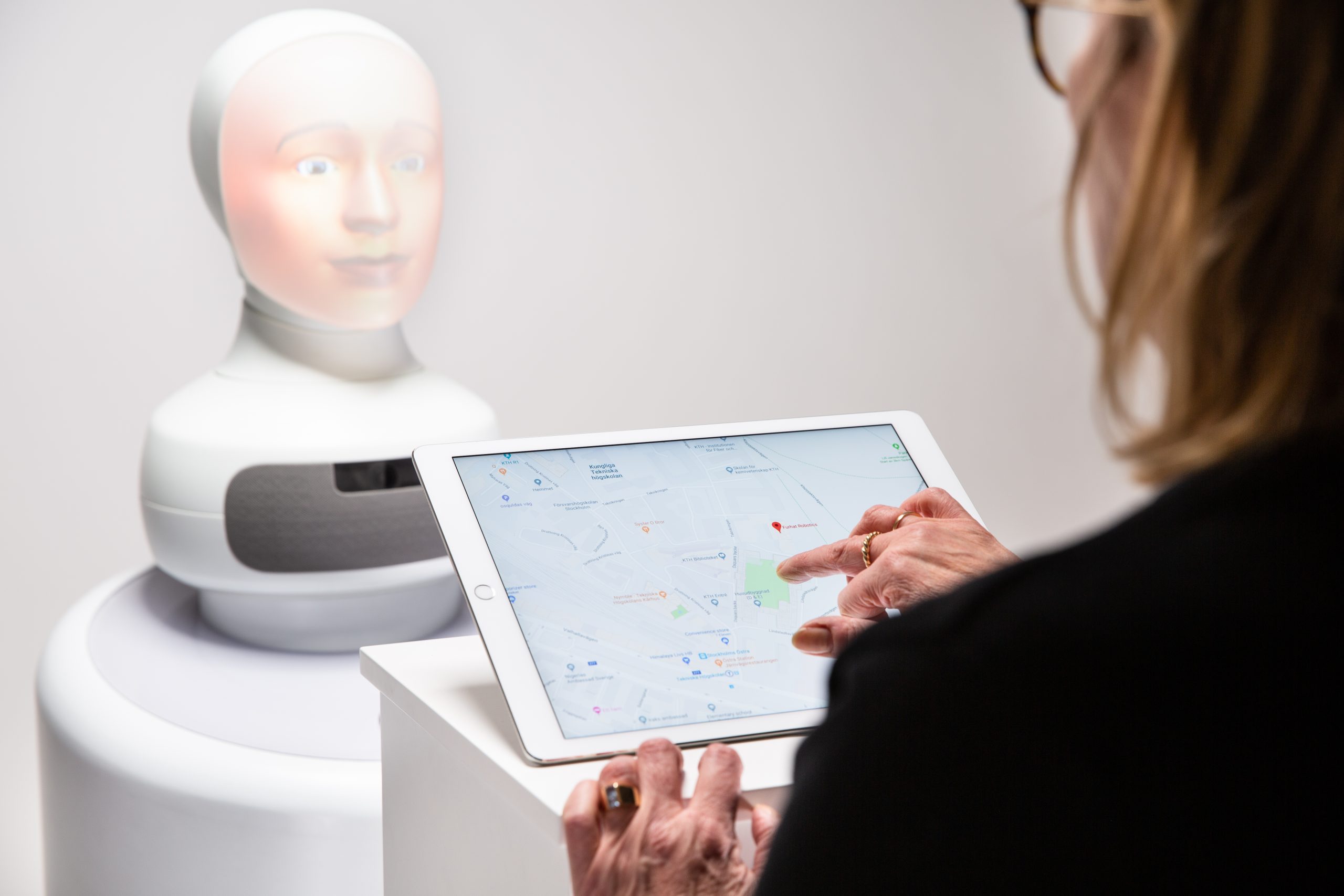
So, what would this look like?
To provide an example of what the above could look like in practice, we have created a concept case for a new type of travel experience.
Social Robots in Tourism
Can social robots help provide unique urban experiences for travellers? Here’s how Furhat can make this possible.
Why the tourism industry needs to innovate
According to UNCTAD, tourism is traditionally one of the fastest-growing economic sectors and is an important driver of economic growth & development. If the numbers of international tourist arrivals are to return to anything like the pre-COVID levels, new solutions are needed that comply with guidelines and safety measures.
United Nations ESCAP makes it evidently clear that recipient countries will have to make it easier for international travelers to arrive. Social distancing is going to be a top priority for transportation hubs, so innovating in all forms of technology, including social robotics, is a key method to enabling this. Forbes recently contributed ideas for how the travel industry needs to innovate, stating that “contactless is key” – something which social robots ensure.
A strategy to encourage the population to travel again is for transportation hubs to focus on developing ‘safety’ innovations. Robots are a part of this – a tool that can provide a service in a risk-free way, that puts visitors at ease, yet still provides a great user experience. These are just one example of a range of technology that industry leaders need to take advantage of as quickly as possible, in order to bring the travel & tourism industry back to its previous highs.
—
Are you curious to meet your first Furhat robot? We wish we could meet you physically, but in the meantime make sure to check out our webinar series to see Furhat in action.
Watch our tourism webinar
Don’t worry if you missed our ‘Social Robots in Travel & Tourism’ webinar, you can watch the recording at any time.


